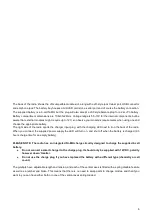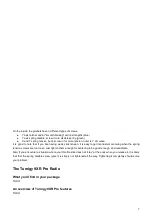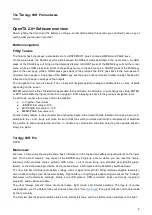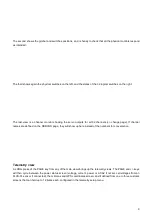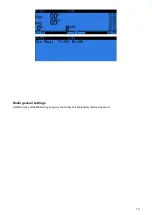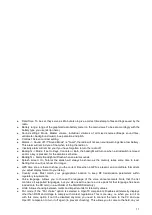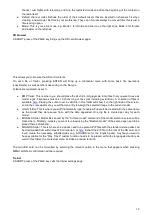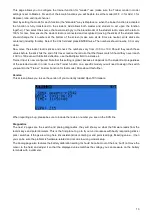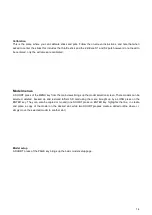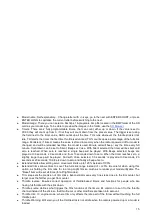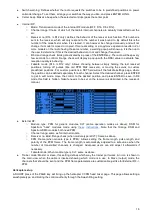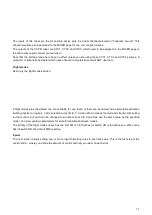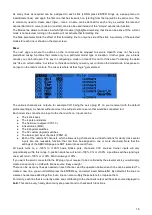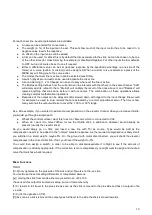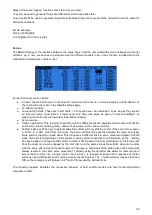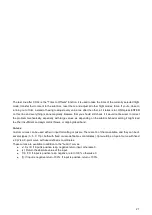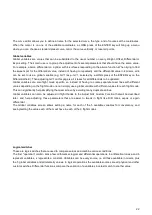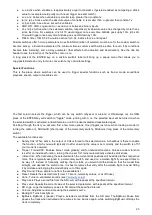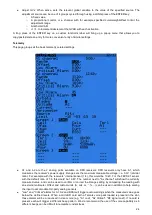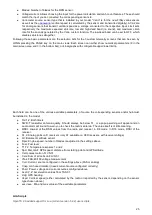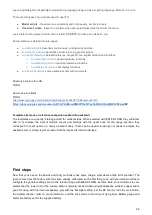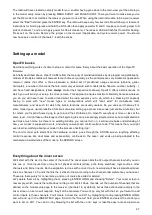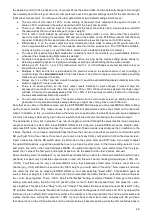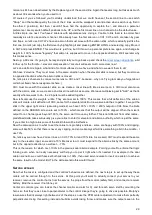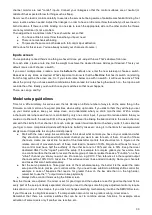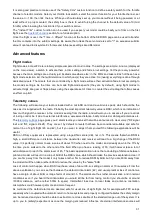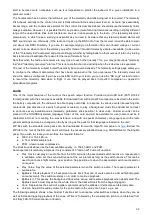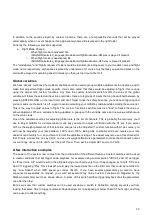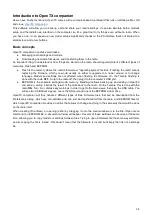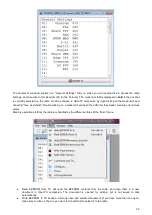
Many of these are "legacy" functions from er9X or even earlier.
They can be used to generate things like differential, which was added later.
They would still be used to generate things like knife edge mixes where you want the correction to be the same for
both stick directions
simple example
CH02 (+100%)[i]Ele
(+10%)[i]Rud noTrim Curve(|x|)
Servos
The SERVOS page is the interface between the setup "logic" and the real world with servos, linkages and control
surfaces. Up to now, we have set up what we want our different controls to do, now is the time to adapt that to the
mechanical characteristics of the model.
For each channel, we can define:
●
A name, that will be shown on the mixer screen when the cursor is on a line belonging to that channel, on
the channel monitor and on the failsafe settings page.
●
An offset or subtrim.
●
Low and high limits. These are "hard" limits, i.e. they will never be overridden, so as long as they are set
so that your servo never forces, it really never will. They also serve as gain or "end point settings", so
reducing limit will reduce throw rather than induce clipping.
●
Servo reverse.
●
Center adjustment. This is similar to subtrim, with the difference that an adjustment done here will shift the
entire servo throw (including limits), and won't be visible on the channel monitor.
●
Subtrim behavior: When set to default, adjusting subtrim will only shift the center of the servo throw. Given
a -100% to +100% order from the mixer, the servo will still move exactly between the lower and upper
limits, without clipping or dead band. This introduces a different stick to servo movement relation for both
sides of the stick. Depending on the situation it can be either convenient or problematic, so the = setting
has been added to change subtrim effect to rather shift the servo throw "symmetrically". A full throw order
from the mixer can now be clipped by the limit that is on the same side as the subtrim, while on the other
side the servo will not reach the limit anymore. That way on both sides of the stick a given stick movement
always results in the same servo movement. Typically using the default mode allows for faster setup of
servos that are driven by a single control input, while = is required to keep correct response of control
surfaces using differential and/or mixing several inputs together. The = mode typically requires reducing
D/R so that a margin is left between full "control" throw and the defined limits.
The following diagram illustrates the respective behavior of both subtrim modes and how Center adjustment
compares to them:
20
Summary of Contents for OpenTX 2.0+
Page 41: ...41...
Page 47: ...Taranis Updating internal XJT module firmware 47...

